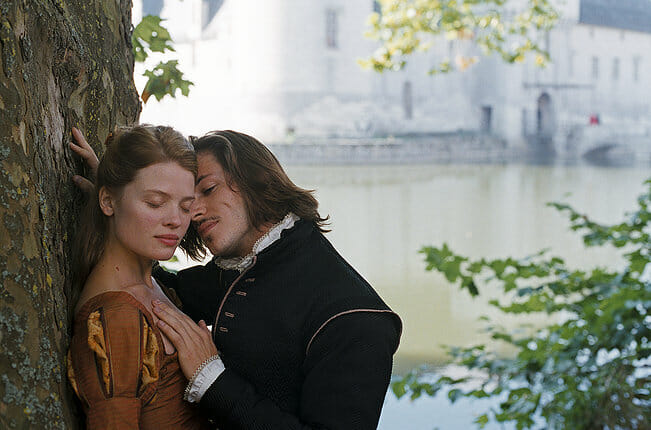
Director: Bertrand Tavernier
Writers: Jean Cosmos, François-Olivier Rousseau, Bertrand Tavernier
Cinematographer: Bruno de Keyzer
Stars: Mélanie Thierry, Christopher Lambert, Raphaël Personnaz, Gaspard Ulliel, Grégoire Leprince-Ringuet
Studio/Running Time: IFC Films, 139 min.
Period romances may not be a genre as popular as horror flicks or westerns, but despite the stuffiness that its name implies, perfectly well-executed ones need not be boring. At least that’s the case with Bertrand Tavernier’s Princess of Montpensier, set during 16th-century France’s endless civil wars and unsurprisingly focusing on various aristocrats aiming to sleep with the titular princess. Aside from her husband this includes her childhood love, her mentor, and the King’s flamboyant brother, but the story’s main thrust is one of self-discovery, and the princess’s romantic dalliances are part of asserting an identity at odds with the society in which she lives.
None of that’s particularly new material for period romances, and many of the films roles and themes are familiar. But Tavernier’s keen directing of this material gives it a new lustre, illustrating that just because we’re familiar with the tropes doesn’t mean they can’t be just as engrossing as ever. Mélanie Thierry does an excellent job as the lead, lending her character intelligence and strength that’s matched by equally memorable performances from Christopher Lambert and Raphaël Personnaz, giving the film the energy of a screwball and making its lengthy 140-minute run-time go surprisingly fast. The leads are all types (the honor-bound warrior, the dandy, the jealous husband) but these performances give them a greater inner psychology. This can’t quite remove all of the cliches at play in this sort of film, but it does make them palatable and show us why they became so universal in the first place.
This is matched by agile and expressive camerawork, which at least makes the film stylistically more interesting than its source material. Of course the costumes and swords are still around—which is unfortunate, since one of the film’s weakest points is the staginess of its fencing—but they’re not given the sort of old-school reverence that we’d see in a Hollywood picture. The way Tavenier nimbly moves the camera makes it closer to camerawork from Martin Scorsese or Orson Welles, but without drawing nearly as much attention itself. In short, it’s masterful and combined with the performances it keeps the film’s material from drying up.
The weakest link in Montpensier is its screenplay, which isn’t disastrous but neither is it good enough to fully support the film on its own. There are a few surprises in store, and most of the major characters are given enough space to shine and show some depth, but that’s really the best that can be said for it. It’s focused on giving all of the typical thrills of its genre, not in offering something truly new or exciting.
As a result Montpensier is in many ways dragged down by how typical an entry into its genre the film is. Its screenplay could be turned into a stodgy straight-to-TV masterpiece theater adaptation with ease, but the film is completely saved by the craft displayed from its cast and crew. That makes it difficult not to enjoy the picture, even while predicting its next 15-minutes. Montpensier won’t treat anyone to a totally new experience, but it’s a well-realized work of pure cinematic skill that’s worth marvelling at, cliches and all.